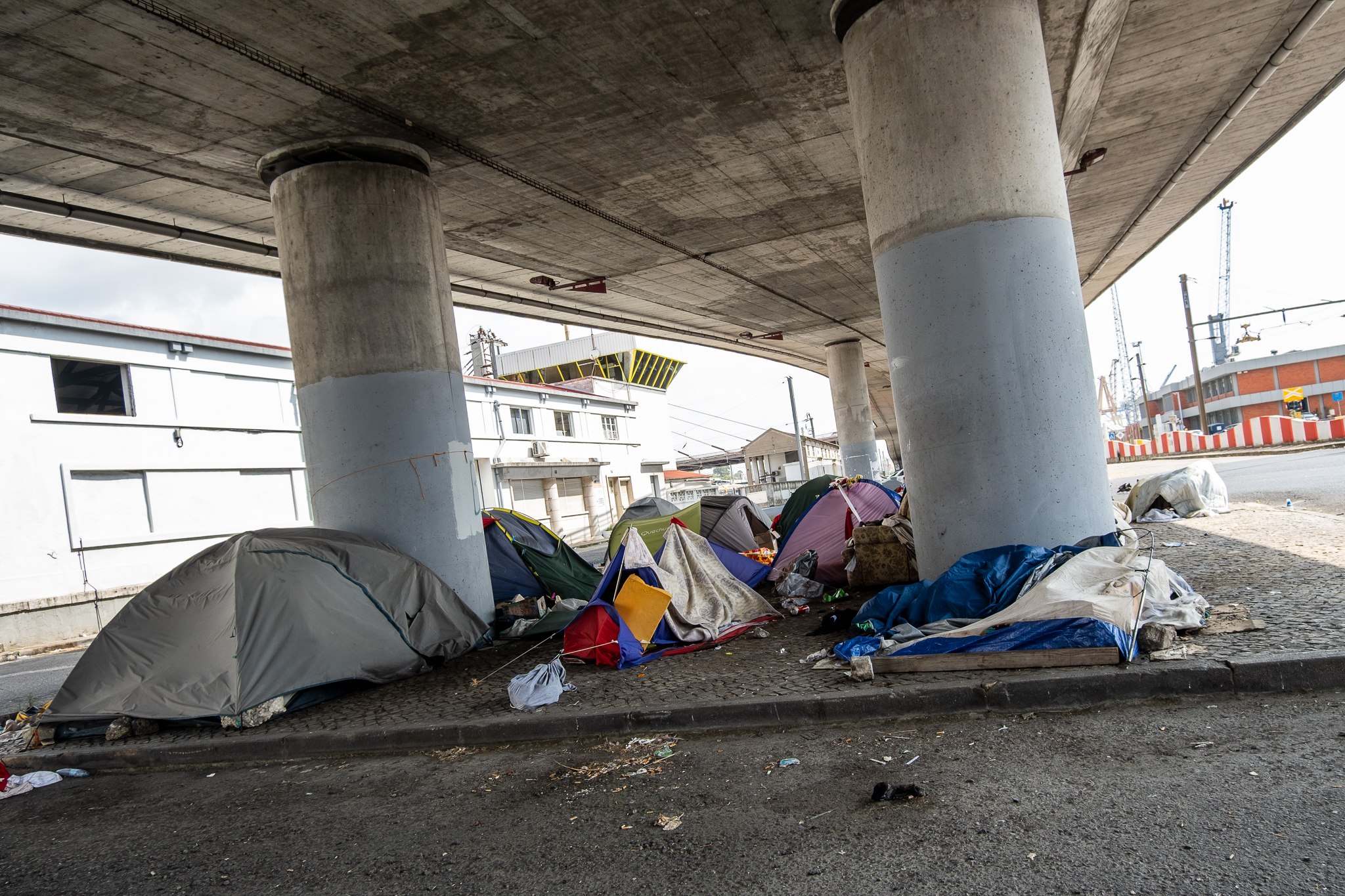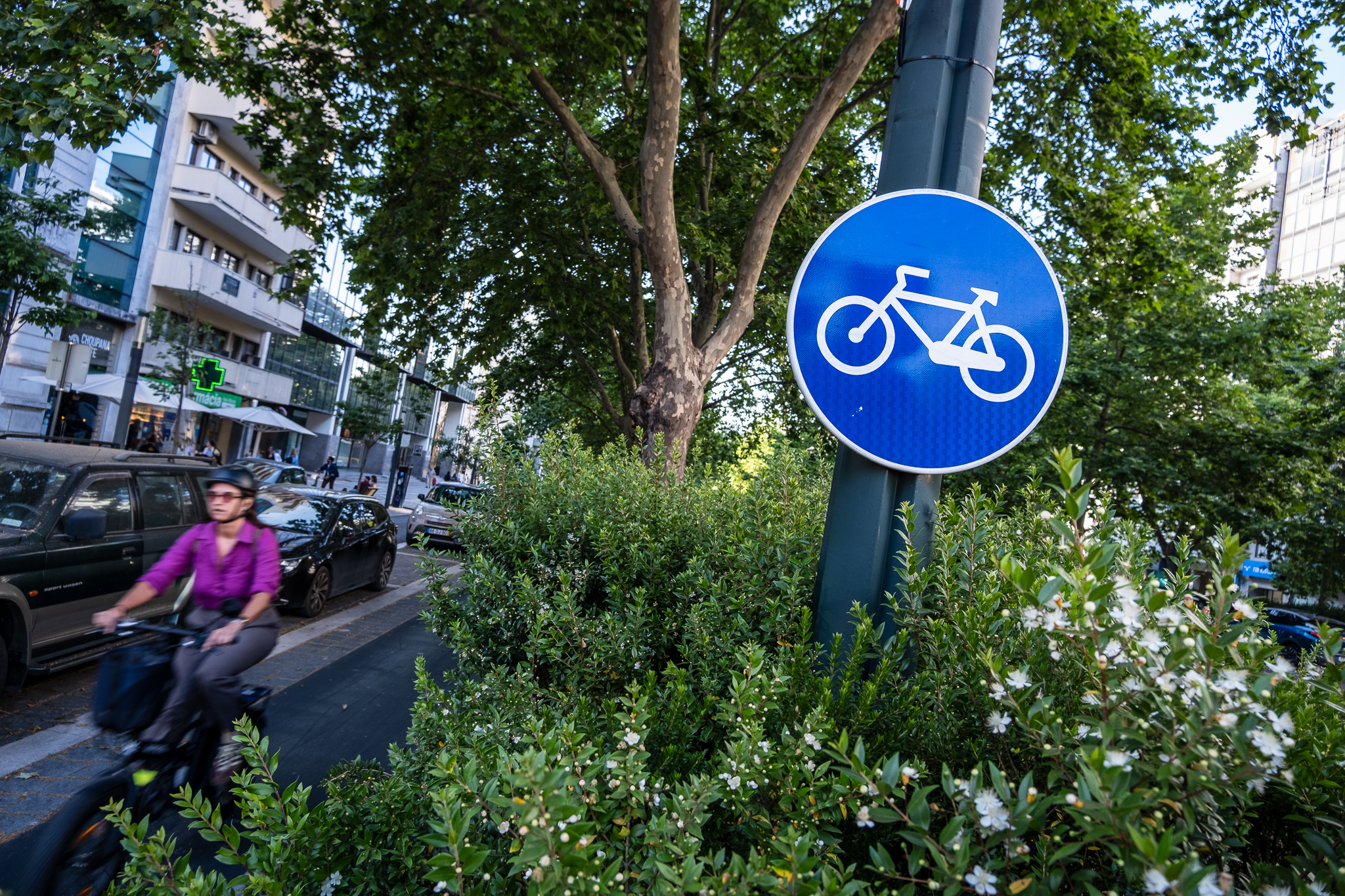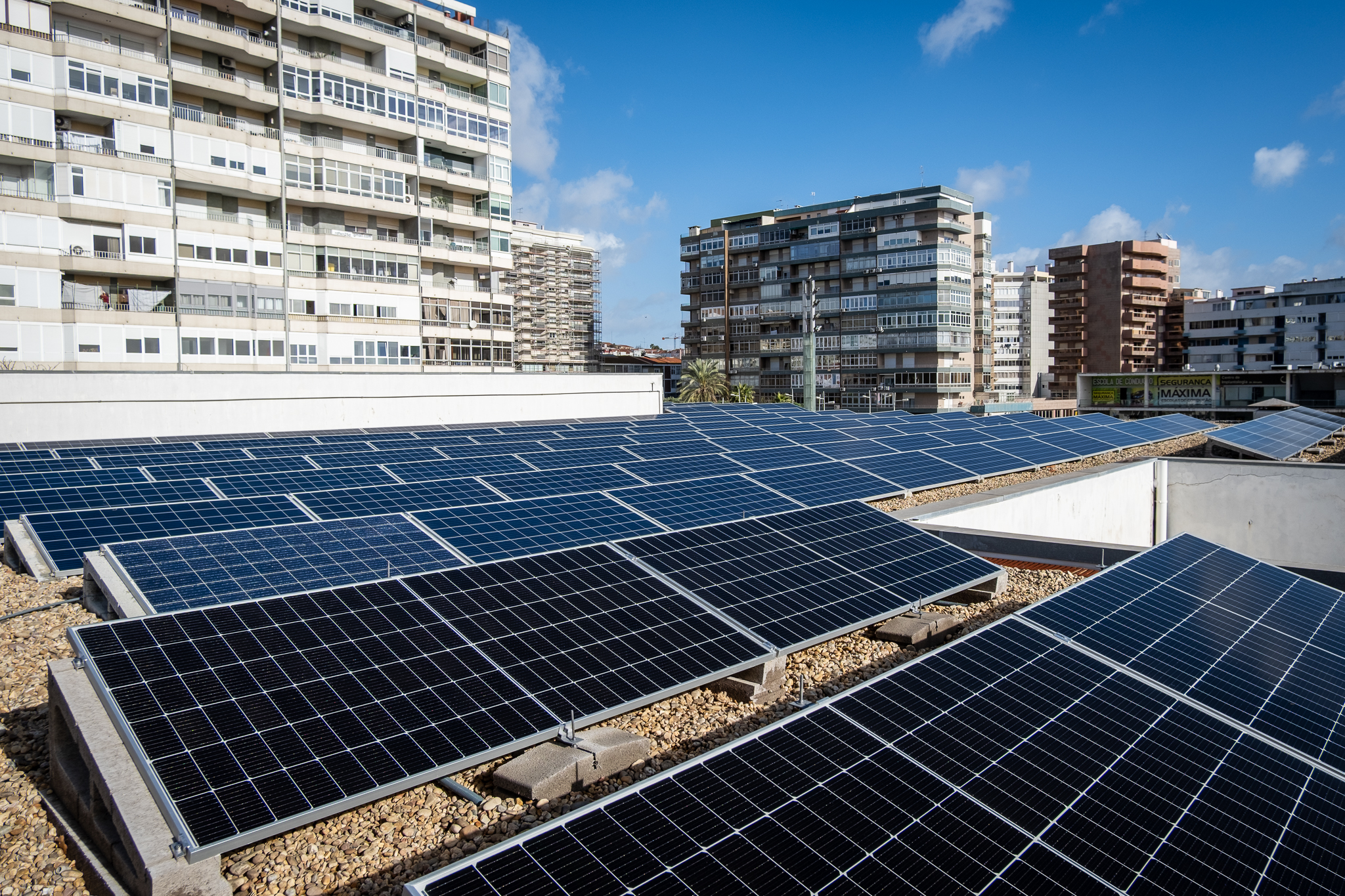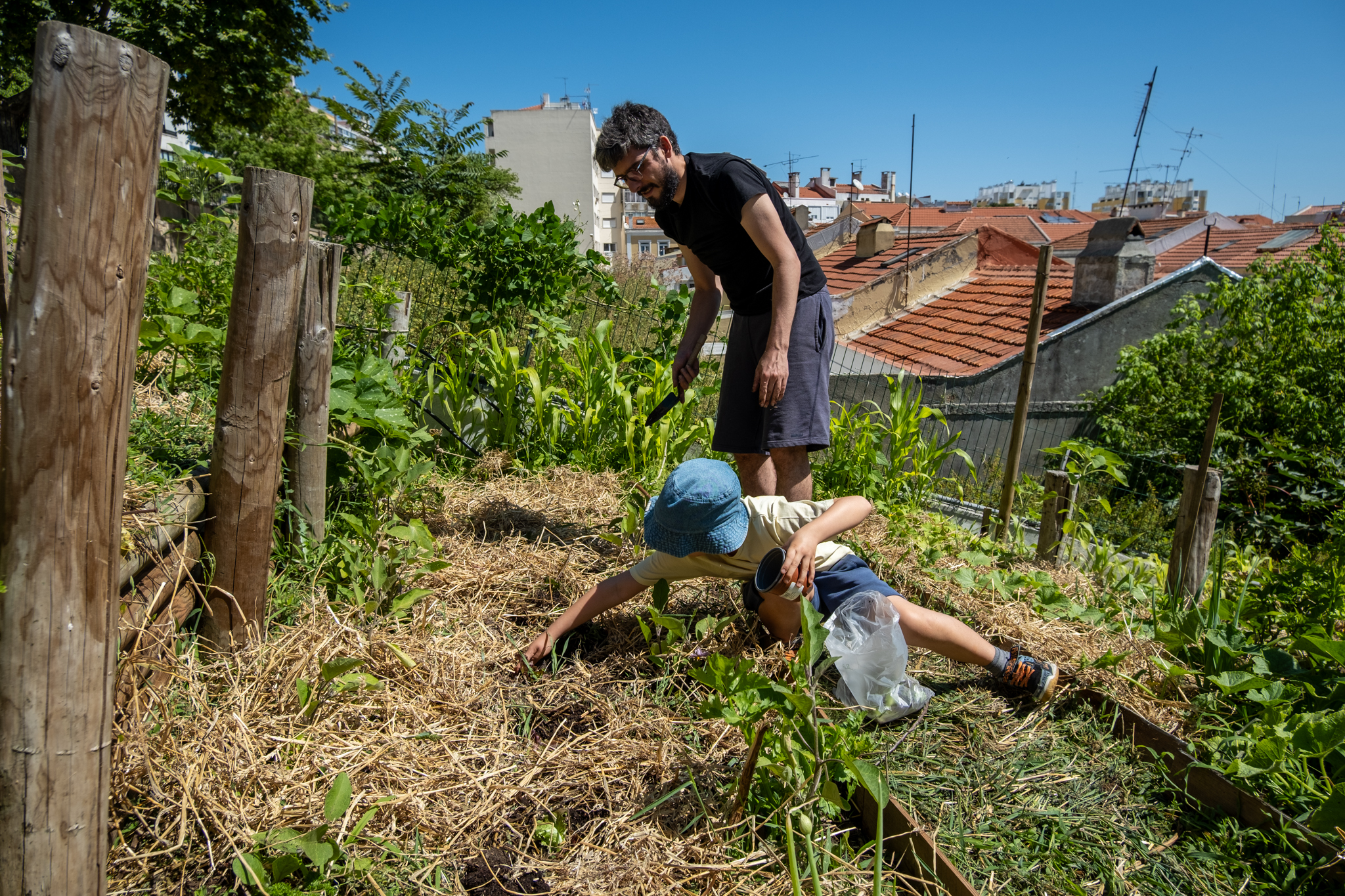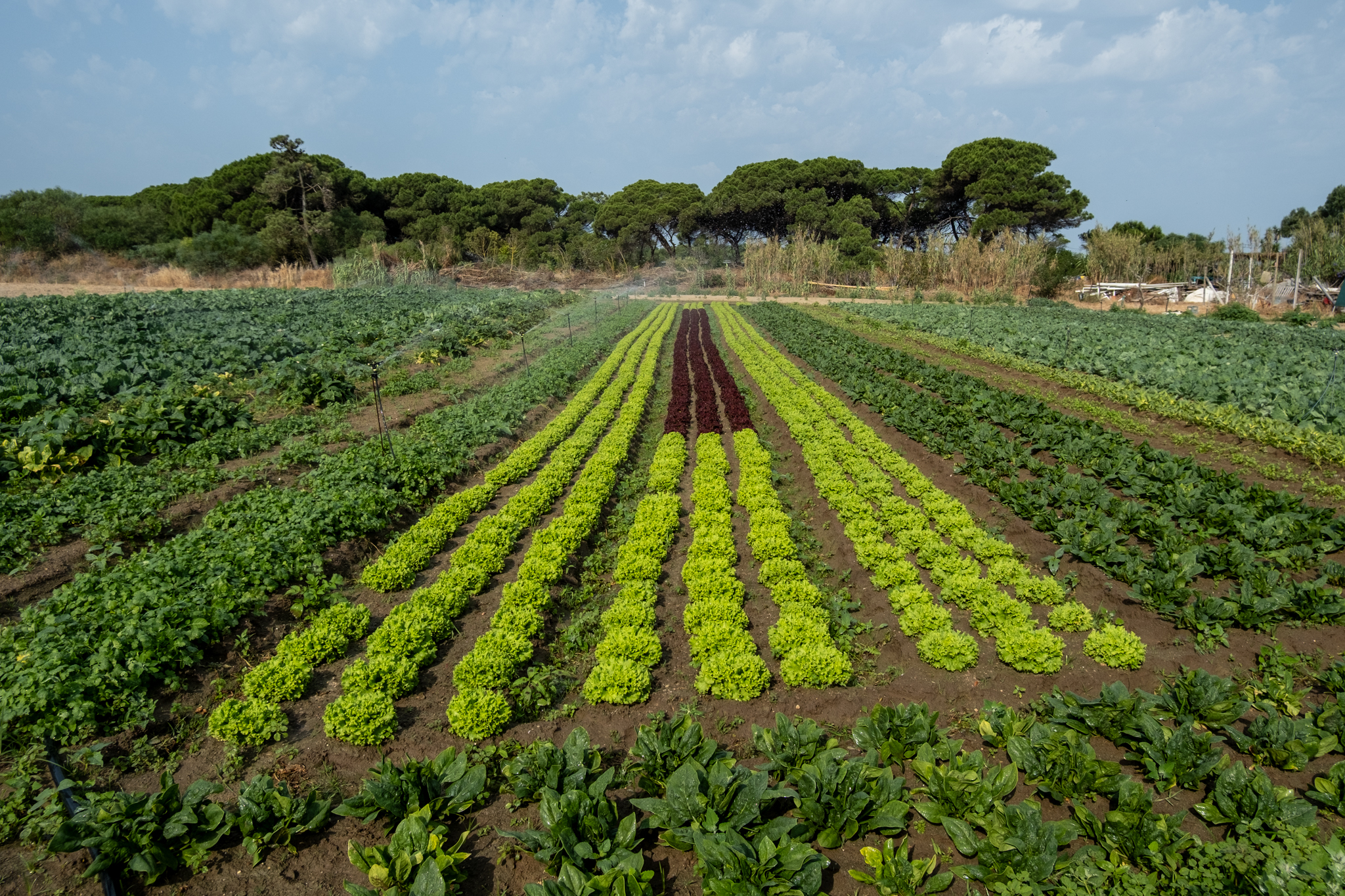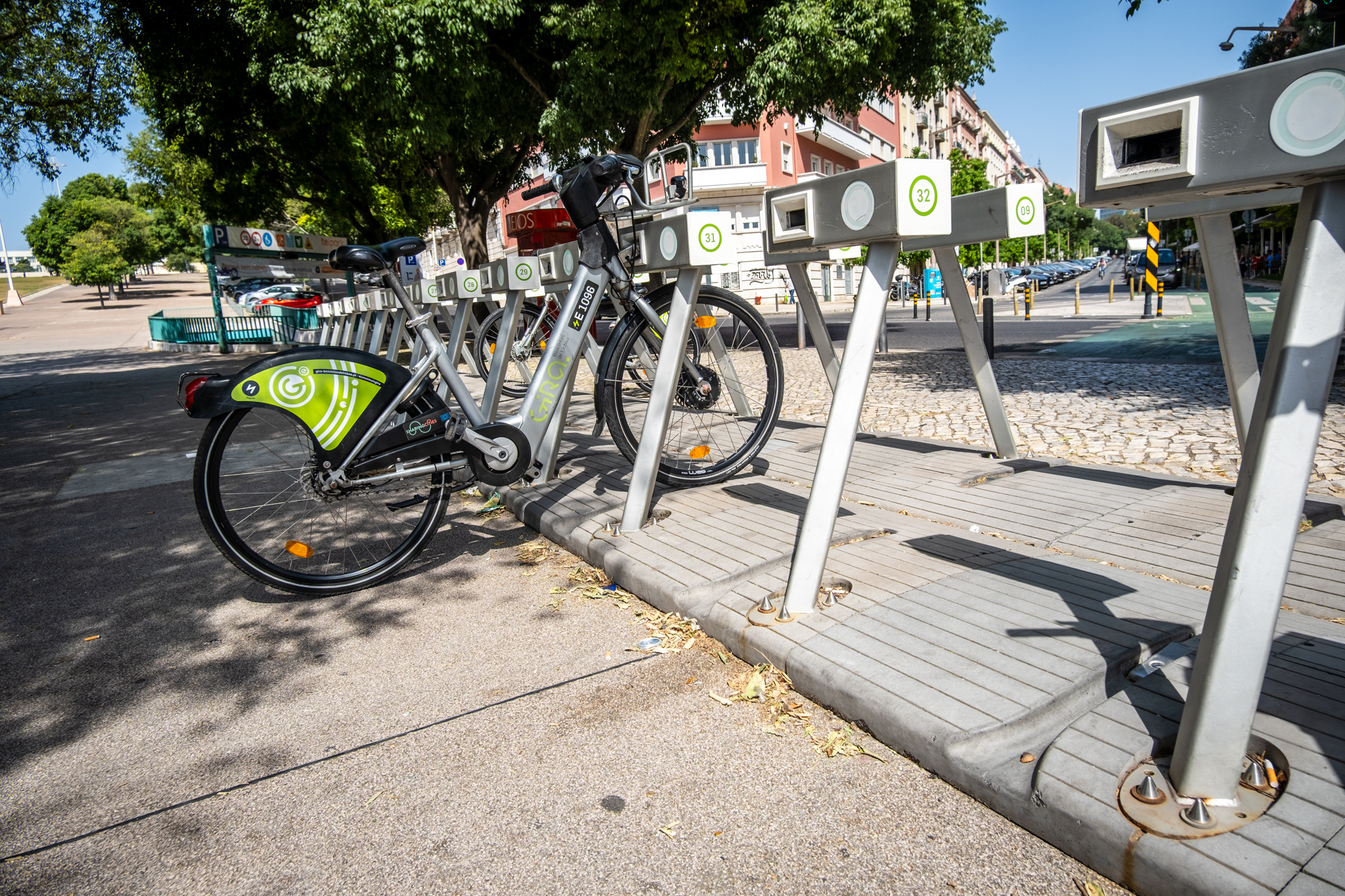The reception center for homeless people in Santa Bárbara, in Arroios, will close and the Councilor for Social Rights, Sofia Athayde wants to open four poles in four social neighborhoods. In 2025, she promises an "innovative social pole" in Marvila, in a former school. The left is against the proposal and has presented an alternative idea, in a...

The opposition councilmen and councilwomen in the Lisbon City Council met last Thursday morning, June 15th, at the Santa Barbara Barracksin Arroios, where there is a Shelter for homeless people, to visit the space and present to the media a proposal that they have written together: want this center to remain central in the city, in the Arroios area, and not be "pushed" to Marvilaas proposed by Sofia Athayde (CDS), current Councillor for Social Rights.
Since 2021, the former GNR Santa Bárbara Barracks has been hosting homeless people. It is one of the four reception centers that were created in the city of Lisbon in the context of the Covid-19 pandemic. And it is one of the two that are still operating; the other is in Casa do Lago, in the parish of São Domingos de Benfica (the municipality closed in early 2022 the centers located at the Pousada da Juventude, in Moscavide, and at the Casa dos Direitos Sociais, in Marvila, alleging lack of dignified conditions and stating that the people who were receiving help in these spaces would continue to be accompanied).

In Santa Barbara, the so-called Municipal Emergency Shelter (CAEM) offers an innovative response to the problem of homelessness and has shared management by three entities: Lisbon City Hall, on the one hand, and two associations, Vitae and Ares do Pinhalwhich have received funding from the municipality since 2020. The center installed in the Barracks has a capacity for 128 people and has multidisciplinary teams that articulate directly with the street teams, Santa Casa da Misericórdia de Lisboa and various structures of Health, Employability and Culture, receiving men, women, couples, as well as their pets.
The CAEM of Santa Bárbara has shared the space of the former military complex with a cultural center since September 2022; that was the month moved to that location the Largo Residênciasafter, months earlier, it had been evicted by real estate speculation in Intendente. The cultural space currently has 140 workers and four dozen social and cultural projects. Both the homeless shelter and the Largo Residencias know that they are on deadline in the old barracks of 22 thousand square meters.

Santa Bárbara will be transformed into affordable housingThis is a work of the Ministry of Housing, financed by the PRR - Recovery and Resilience Plan, which involves 240 houses. These houses will be added to another 85 affordable houses that the Lisbon City Hall (CML) has also planned for that area, next to the Paço da Rainha, and whose concession tender is currently underway. A total of 325 low-priced homes that families can afford are planned in the vicinity of the Barracks. The Government's project for the Barracks has to be completed by the end of 2026, at the risk of running out of RRP funding, so the vacating of the space will have to happen in the coming months. Largo Residências will have to find a new solution; for CAEM, the municipality already has an alternative planned.
The proposal of Moedas' executive
What alternative is that? The City of Lisbon wants relocate the reception that is currently provided for the homeless at the Santa Bárbara Barracks to four centers in four social districtsAlfredo Bensaúde (Olivais), Condado and Armador (both in Marvila), and Quinta do Ourives (Beato). According to the Público newspaperthese centers will be transitory, and it is foreseen opening, in 2025, of a "innovative social hub for various social services" in the former Afonso Domingues School, in the parish of Marvila. This school was hastily closed in 2010 to be demolished for the construction of the high-speed rail line and the Third Crossing of the Tagus (TTT), and has been abandoned and at the mercy of vandalism ever since.
Público writes that future equipment will welcome homeless people and provide answers for their reintegration, also making available social offers open to the community; it will be a permanent welcoming project, contemplating "all necessary valences of dignity, integration and autonomy"promises Councilwoman Sofia Athayde's office. Funding for the current partners of the Santa Bárbara CAEM will be assured "for as long as necessary" until the space is effectively deactivated, the same office informed Público.

The future of the Santa Bárbara CAEM was known at the May 24th town hall meeting, when the extension of the financing to the associations Vitae and Ares do Pinhal for only three more monthsIt was at this meeting that the opposition learned of the intentions to relocate the response to the homeless to more peripheral areas of the city. It was in this meeting that the opposition learned of the intentions to relocate the response to the homeless to more peripheral areas of the city, which caused some indignation and led the councilmen of the PS, Livre, BE and Cidadãos Por Lisboa (CPL) to join together in a joint counterproposal.
The opposition's alternative proposal
The counter-proposal from PS, Livre, BE and CPL will still have to be formally submitted for discussion and vote at a future city council meeting, but the initiative has already been presented to the media and the city community, in a visit to the Santa Barbara Barracks last Thursday, June 15. The four parties, which oppose Carlos Moedas and Sofia Athayde in the Lisbon City Council, disagree with the idea of the Councillor for Social Rights, considering that "reveals poor understanding of the social needs of homeless people, who typically remain in central areas of cities, as is increasingly the case in Lisbon around Avenida Almirante Reis".
The opposition councilors understand that "a response to the reality of people experiencing homelessness, to be effective, must happen in the places where they stay and not on the outskirts of the city, from where, sooner than later, they will move away towards the center"as can be read in the text of the joint proposal. "It is therefore necessary to change the current plan of the Council of Social Rights and start the search for alternative spaces that meet the specific needs and the low mobility of this vulnerable group, according to criteria of proximity to the places of effective permanence and accessibility of essential services and existing support networks".

The proposal calls for the Lisbon City Council to ensure that the support and reception services is maintained "in the city center, in the areas where the homeless people are". Thus, and given the unavailability of the Santa Bárbara Barracks (due to the "timing of RRP investments" and the "need" of that equipment "enter construction work to build affordable rental housing by the central state"), proposes, "during two months, a process of identification of alternative hypotheses in the CML and State assets located in the central area of the city, for the installation of equipment of a definitive nature". The councilors of the PS, Livre, BE and CPL also understand that "future decisions should take into account the results of a participatory process that includes homeless people, the support network and local communities, as well as the technical teams of associations with proven experience in integrated psychosocial responses".
The proposal can be seen, in its entirety, here:
The proposal gathers eight votes among the councilors, and its approval depends on the PCP. The Communists have two votes and the Moedas executive (PSD/CDS) has seven. Thus, if the PCP abstains or votes in favor, the proposal from PS, Livre, BE and CPL is approved; if the PCP votes alongside the PSD/CDS, the initiative will be disapproved. This second scenario is highly unlikely, since the PCP has already said, through the voice of its councilwoman Ana Jara, that it will approve the document it chose not to endorse. The Communists agree in general terms with the counterproposal of the other councilors, considering that the Santa Bárbara CAEM could be relocated to the former Miguel Bombarda Hospital, thus making the social response compatible with the affordable rent project.
In the visit to CAEM of Santa Bárbara, the socialist councilmen Pedro Anastácio and Inês Drummond, the councilman for Livre, Rui Tavares, the BE councilman, Beatriz Gomes Dias, and the CPL councilmen, Paula Marques and Floresbela Pinto, were accompanied by teams from the associations Vitae and Ares do Pinhal. Journalists were not allowed inside the space by Councilwoman Sofia Athayde's office, despite the invitation that had been sent to the newsrooms by the councilmen of the different mentioned parties. However, the media could hear a briefing that was made at the entrance to the Barracks.
In this short presentation, representatives from Vitae and Ares do Pinhal explained that the Santa Bárbara Barracks are betting on a holistic intervention model in which homeless people - who are signaled by the street teams of the Santa Casa (in other words, the Barracks does not have an open door, there needs to be previous signaling) - receive in this space beyond the traditional accompaniment. In fact, the response offered at the Barracks includes clean beds where residents can stay overnight and have access to clean clothes, bathrooms and other basic services. They also have meals. And they can receive medical and psychological follow-up, to help them not only with their primary care, but also with their mental health and also with their addictive behaviors.
The 128 people who are currently in the Santa Barbara CAEM can leave and enter freely between 7 am and 10 pmSome of them work in the services nearby, making an income and also establishing relations with the neighborhood, explain the people in charge. Inside the barracks, the residents have different leisure and community activities at different times, such as sewing workshops, gardening, vegetable gardening, plastic arts, and theater. They are also invited to participate in the preparation of meals throughout the day.

The two associations say that the he stay in Santa Bárbara is participated by the residents themselves, and the space managers try to adapt the activities, dynamics and strategies to the new people that arrive, respecting their options and choices. This shelter project is, therefore, an initiative of cooperation between the municipality, Vitae and Ares do Pinhal, but also with the homeless population. At the Santa Bárbara Barracks, 24 people from the two social entities are currently working in rotation.
There are no set limitations on how long people can stay in the Barracks, but monitoring is done when someone leaves so that they don't return to where they were. In this context, aside from the Santa Bárbara project, Ares do Pinhal is developing a pilot project entitled Transition ApartmentsThis is a program in which homeless people are housed temporarily in municipal buildings and receive support there before they become autonomous in their daily social life; this program currently operates with a minimum of 8-12 places.
Those in charge also explained that the homeless end up settling in areas where there are resources, and when people are helped and taken off the street, other people arrive to take their place. The Arroios area and the Almirante Reis axis has historically been an area where there is support, and it is also close to many services, transportation and also to hospitals, which has advantages for the support teams. However, those in charge admit that civil society associations are used to working with what they have and that they have the capacity to reinvent themselves when faced with new paradigms.
In 2021, when the four centers were in operation under the responsibility of the then Councilman of Social Rights, Manuel Grilo (PS), Vitae received from the Lisbon City Council about 525 thousand euros for different activities; the amount delivered to Ares do Pinhal was approximately 258 thousand euros. At the end of that year, two of the four centers were closed; and, in 2022, already with the Social Rights under the responsibility of Councilwoman Laurinda Alves (independent from Moedas' list) for CAEM Santa Bárbara, Vitae received 920 thousand euros and Ares do Pinhal received about 438 thousand euros to continue the work done there. The association CASA - Centro de Apoio ao Sem-Abrigo (Center for Support to the Homeless) received 158 thousand euros to ensure meals at this center. All told, in 2022 alone, the municipality led by Carlos Moedas invested more than 1.5 million Euros directly in the associations that keep the response to the homeless active in Santa Barbara.
In 2023, already with Sofia Atayde as Councilwoman, Vitae received about 307 thousand euros and Ares do Pinhal received a little over 146 thousand euros; and the meals were ordered for about 65 thousand euros to Crescer - Community Intervention Association. Doing the math, the municipal investment in Santa Barbara was more than two million Euros between January 2021 and April 2023. These accounts do not include other parallel initiatives, such as the pilot project Transition ApartmentsThis is the responsibility of Ares do Pinhal, for which this association received more than 178 thousand Euros between November 2021 and 2023.
For now, the Santa Bárbara Reception Center can afford to operate until July 2023. The closure of CAEM was forced by the owner of the space, Fundiestamo, of the government-run Parpública Group, which will transform the space into an affordable rental housing complex. It is expected that the space will have to be vacated by September before construction can begin, with funding from the RRP and a maximum completion date of late 2026. The future of CAEM will remain under discussion and is now up to the municipal executive.
📁 Documents
Update at 4:32 pm on 6/19/2023: corrected inaccuracy in the subtitle.


